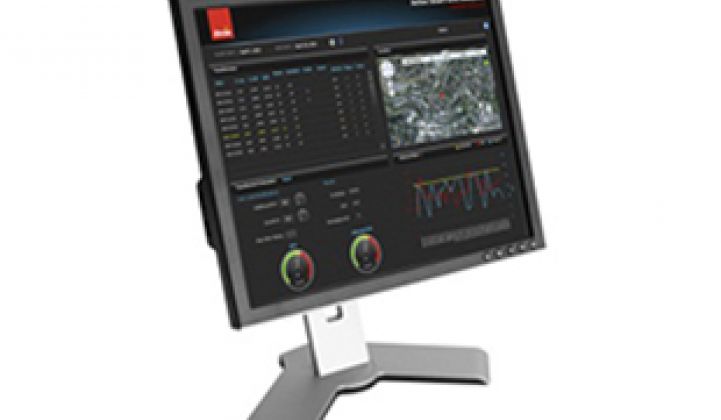It’s generally well known across the industry that smart metering and advanced metering infrastructure (AMI) provide large amounts of critical data to utility companies. However, many companies are not equipped to fully utilize the benefits and opportunities this data provides. To use smart meter data to balance loads, improve outage response times and better serve customers, utilities should also employ analytics to realize the full value of smart meter and AMI data and gain tangible insight into their operations. In short, simply gathering data isn’t enough. Utilities must also turn data into actionable intelligence.
Analytics are the foundation of the next-generation utility that will improve the information available both internally to the utility and externally to customers. Analytics use the two-way AMI data for programs such as remote connect/disconnect and access to load profile data for customers. With analytics, utilities can balance loads, enhance outage restoration, improve resource efficiency and streamline financial analysis.
Load balancing and outage restoration
Factors such as changing weather patterns, aging infrastructure, and increased adoption of electric vehicles and other new technologies are creating new challenges for utilities. While not a panacea for all challenges, transformer load management analytics can utilize smart-meter data and actual weather models to continuously monitor and analyze distribution transformer loading levels and report on asset health, helping utilities make informed decisions to balance loads.
These analytics also include scenario analysis capabilities that allow operators to predict the impact that new loads -- such as electric vehicles -- will have on transformers. In addition to transformer load management, voltage monitoring assesses voltage at every delivery point in the distribution network, allowing analysts to evaluate and understand the impacts of customer loads, variable energy sources or distributed energy. Trends from voltage monitoring can be synthesized to allow for system improvements with a holistic approach using the measured data, rather than relying on individual customer complaints or system models.
In more real-time utility operations, optimization of grid operations increasingly calls for predictive analytics that account for weather patterns, variable resources, utility programs and emerging technologies, which create a dynamic load environment and impact customer loads. Forecasting analytics allow utilities to synthesize data and predict total customer usage at the feeder or substation level; forecast net usage reduced for distributed generation, such as rooftop solar; estimate the demand response resources available at the facility level; and anticipate energy usage for new technologies. These trend forecasts can be routed to distribution management systems and demand response management systems to support grid optimization and replace reactive processes with proactive management as each day evolves.
As the frequency of severe storms increases, power outages are becoming more common as well. A study conducted for the U.S. Department of Energy by the Lawrence Berkley National Lab in 2012 concluded that both the average frequency and average duration of power outages had increased at a rate of 2 percent per year over the previous ten years. Faced with increased outages, utilities have developed a renewed focus on improving power reliability and restoration efforts. Analytics enable operators to monitor and report the exact times of service interruption at each system endpoint and use these results to measure improvement in restoration time from automated distribution processes. This allows utilities to identify and restore outages more rapidly, without having to rely on customer inquiries.
Improving resource efficiency
Over the last few decades, utilities and consumers have put a higher priority on using energy and water resources more efficiently and effectively. Demand response analytics software and services combine smart meter usage and demand data with other information including weather and third-party customer and facility information to help utilities identify customers that are the best candidates for energy efficiency and demand response programs. With demand response analytics, utilities are also able to identify and target areas in the network that are capacity-constrained, leading to substantial capital cost benefits. Utilities can also monitor and report on the performance of these types of programs.
Analytics also help improve efficient energy use and management by quickly detecting and reporting revenue losses. Energy diversion detection analytics include detection capabilities to identify meter tampering and service bypass conditions. This allows operators to identify energy revenue losses, use AMI data to pinpoint theft, and decipher and prioritize tamper messages and patterns. Energy diversion detection also includes capabilities to direct investigations to the field and track and report on possible theft or energy diversion so operators can continually learn and refine filters and algorithms over time to improve success rates and ultimately reduce resource waste and revenue loss.
Streamlining financial analysis
Financial analytics are another important tool, providing utilities with information on financial results with confidence and certainty. Smart metering data provides the foundation for a variety of improved financial analytics for the industry, which is currently clouded by the irregularities of billing cycles, off-cycle reads and billing adjustments. These irregularities often lead to a lack of clarity about the business and what the numbers should be at the close of each month and quarter. Financial analytics can eliminate uncertainty by replacing estimates with direct measurements and allowing for the calculation of hourly, daily and monthly sales, unbilled sales, system losses and supplier obligations, as well as daily tracking of measured outcomes against budget forecasts.
While many companies and municipalities implement smart grid infrastructure to improve the management and delivery of energy, analytics can help companies reach the full potential of smart grid investment. Whether it is improving efficiency, balancing load, restoring power faster following outages, or getting a better handle on billing cycles, analytics give utilities the actionable intelligence they need, super-charging the power of smart metering and AMI, enabling efficiency and optimization across the industry.
To learn more about analytics, visit the Itron booth at SAP for Utilities September 7-10 in Hollywood, Florida.




